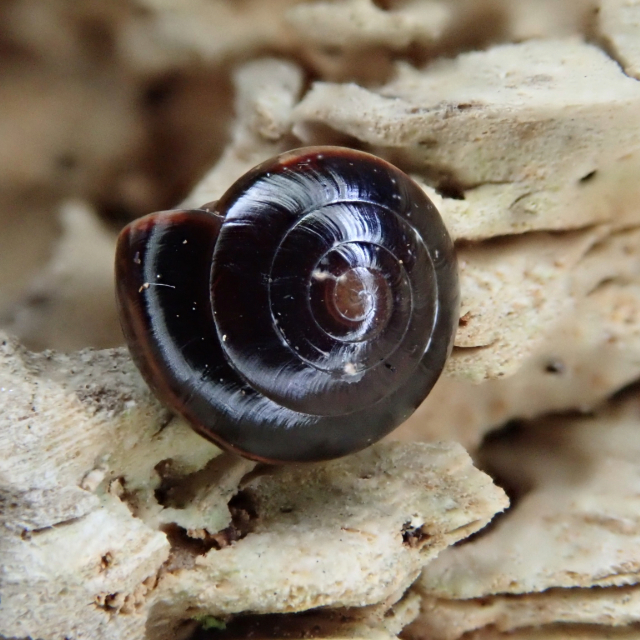James Tweed
CBCS PhD Candidate
Insects and other invertebrates are vital to healthy ecosystems, providing functions and services such as pollination, nutrient cycling, pest control and food resources. However, despite this importance, invertebrates are almost invariably underrepresented on threatened species lists. The IUCN Red List is the most complete source of threatened species information in the world. Currently, a total of 91,667 species are listed, of which only 30.4% are invertebrates. This highlights the bias of conservation towards vertebrate species, as globally invertebrates account for >96% of the approximately 1.1 million described animal species.
The focus of my PhD research is the conservation of Norfolk Island’s insect fauna. None of Norfolk Island’s nearly 300 described endemic invertebrates have yet been assessed for the IUCN Red List, apart from a handful of snails (all outdated), one beetle and a freshwater shrimp. Given the tiny size of Norfolk Island (37.7 km2) and its high degree of environmental degradation, it is vital we understand its endemic species and the threats they face to enable effective conservation.

Image credit: Salit Kark
Experts and the wider CBCS community
To kick things off, we organised a workshop to bring together experts to collaboratively conduct the first comprehensive threat assessment of Norfolk Island’s endemic invertebrates. I was lucky enough to receive grants from both the CBCS Small Grants Scheme and the Mohamed bin Zayed Species Conservation Fund that allowed me to make this idea a reality.
IUCN Red List assessment training took place before the workshop. This training was delivered by James Tallant (Ecosure Environmental Consultancy) and Janice Chanson (Re:wild), both expert Red List assessors, and was made available to all workshop participants. We opened additional spaces on the one-day training course to the wider CBCS community, providing a great opportunity for our CBCS colleagues to upskill in this important process.
The workshop was held in dual mode at The University of Queensland, with some participants attending in person and others joining online from Norfolk Island and various parts of Australia. A total of 18 experts participated in the workshop from 12 organisations, with several others contributing to assessments at later dates. A diverse range of specialists were represented, including taxonomists, ecologists, conservation managers and Red List assessors, among others, all with skills and expertise vital to accurately assessing the threat status of species.
Signpost species and assessments
The workshop ran over three days from 2–4 December 2024. The first day began with an excellent discussion of the threats known or suspected to be having an impact on Norfolk Island’s invertebrates at present, as well as plausible future threats. The afternoon was spent undertaking assessments for what I termed “signpost species”. These species were specifically chosen to represent the full range of taxonomic groups, ecologies, relative abundances, distributions and levels of knowledge of the Norfolk Island invertebrate fauna. By collectively undertaking assessments of these species, we were able to more rapidly assess the remaining taxa and ensure consistency between our assessments.
Days two and three focused on specific taxonomic groups. During these sessions, we completed preliminary assessments for land snails, arachnids and other non-insect arthropods, and made a sizeable dent in the insect group (by far the largest group of endemic invertebrates).

Image credit: James Tweed
Next steps
The next step is to draft the assessment for each species. This is the laborious component of the assessment process; however, completing the drafts for the signpost species will undoubtedly speed it up, as they will provide a template for the other species.
The drafts, once completed and circulated to the relevant workshop participants,
will be submitted to the IUCN for review and eventual publication on the Red List. I am balancing this with the completion of my PhD; however, we hope to submit the first batch of assessments to the IUCN in the first half of this year.
Ultimately, it is hoped that this workshop and the resulting threat assessments will help to set a baseline for invertebrate conservation on Norfolk Island. By involving a diverse range of experts in the process, it has been possible for us to identify species and threats of particular conservation concern, as well areas of data deficiency and directions for future research. In addition to the assessments themselves, we hope to collectively publish a paper summarising the approach used during the workshop and the outcomes of the assessments to provide a framework for similar projects elsewhere.
A huge thank you to all who participated in the workshop. Big thanks, too, to the CBCS Small Grants Scheme and the Mohamed bin Zayed Species Conservation Fund for their financial support, without which this workshop could not have been possible.
To keep up to date on our latest events, check out our Bluesky and LinkedIn.
